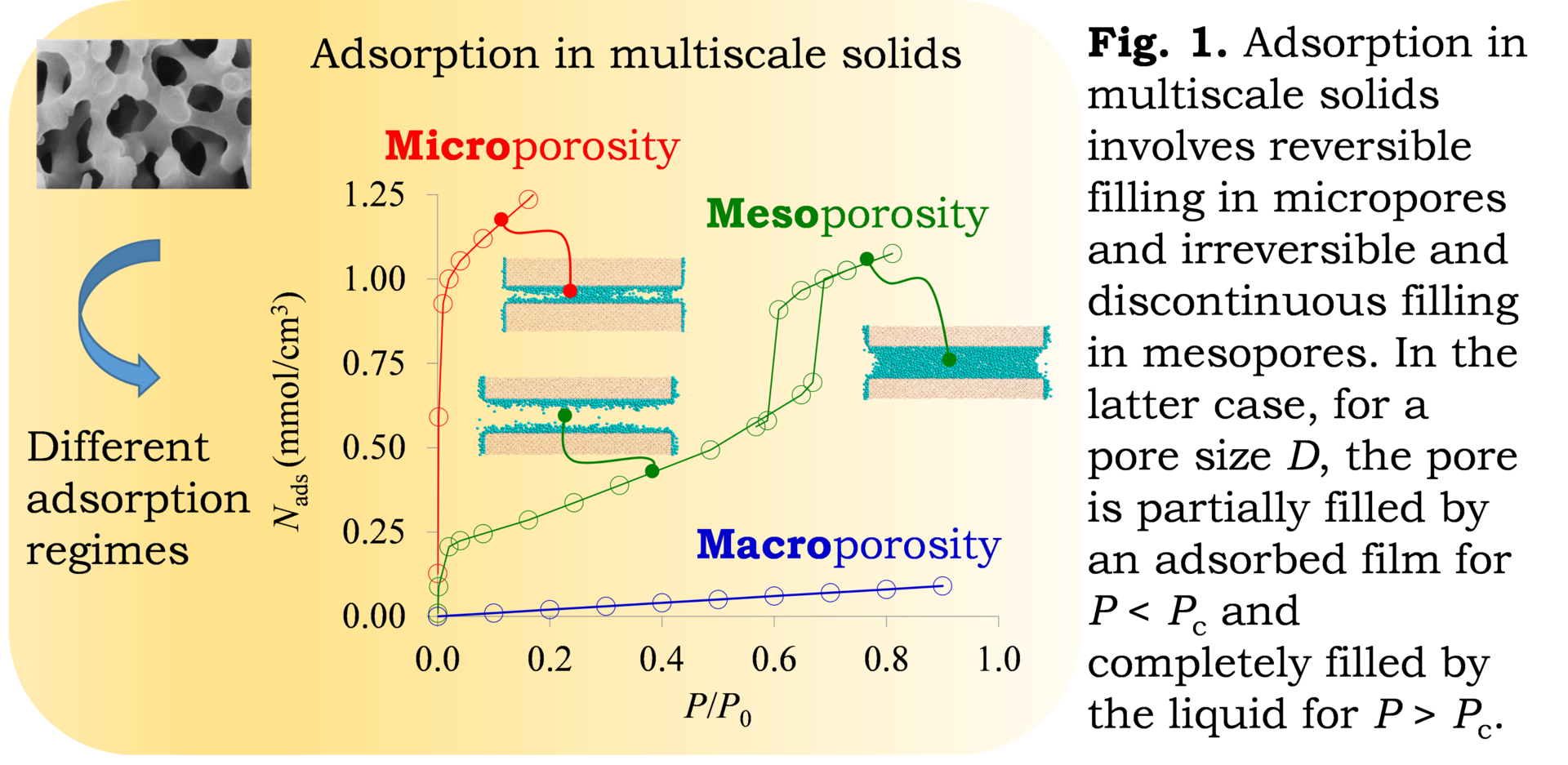Abstract:
Porous materials are at the heart of numerous important applications: adsorption (gas sensing, pollutants entrapment, drug delivery, chromatography), energy (porous materials are used for hydrogen storage, fuel cells and batteries), environment (phase separation, water treatment, nuclear waste storage), Earth science (the soil porosity ensures exchange between the soil and the atmosphere), etc. In this seminar, I will present the state-of-the-art on adsorption, phase transition and transport in multiscale porous materials which possess pore sizes spanning several orders of magnitude (from the nm scale to the macroscale).1,2 I will first discuss the different adsorption regimes encountered when a fluid is set in contact with a porous material: from irreversible adsorption/capillary condensation for the largest pores to reversible/continuous filling for the smallest pores. We will see that simple thermodynamic modeling allows rationalizing these different regimes provided that a description of the shift of the critical point of the confined fluid is taken into account (Fig. 1). Then, I will show how transport in such media can be described without having to rely on macroscopic concepts such as hydrodynamics (which is known to breakdown at the nm scale).3,4 Using parameters and coefficients available to experiments, we will see how transport coefficients can be rigorously obtained from simple models in the framework of Statistical Mechanics. While these results mostly pertain to basic science, they will be discussed in connection with important examples such as hydrocarbon recovery from shale gas plants.5
1 B. Coasne et al., Chem. Soc. Rev. 42, 4141 (2013).
2 B. Coasne, New J. Chem. 40, 4078 (2016).
3 K. Falk et al., Nature Comm. 6, 6949 (2015).
4 A. Botan et al., Phys. Rev. E. 91, 032133 (2015).
5 T. Lee et al., Nature Comm. 7, 11890 (2016).
